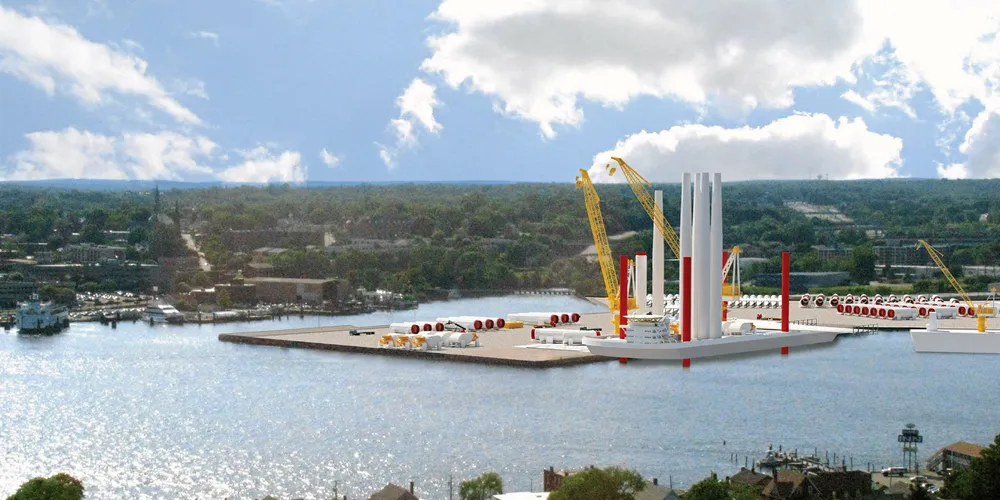US offshore wind terminal reaches milestone – but so much more needed to hit Biden's goal
Installation of nation's first two projects set to begin this spring but renewable energy lab warns infrastructure investments need to triple to meet national target

The terminal at Port of New London in the US state Connecticut has reached a critical milestone with completion of its offshore wind wharf, readying it for staging this spring of the 130MW South Fork offshore wind array.
The 800MW Vineyard Wind 1, under development by a JV of Copenhagen Infrastructure Partners and Iberdrola-owned Avangrid, will likewise begin offshore installation this spring.
These projects are the vanguard of some $2bn in port and specialist vessel investment already underway, but the sector will still fall far short of the need, according to the National Renewable Energy Laboratory (NREL).
Investments need to triple
The need will be especially acute from 2025-2027, when 13 projects are expected to begin construction while US capacity will only allow for 2-3, according to NREL.
The US “would have to invest at least $6bn in marshalling ports, WTIVs and HLVs [heavy lift vessels] to provide sufficient resources that can mitigate project delays and help achieve the national offshore wind energy target,” the roadmap noted.
The US would need five to six WTIVs and HLVs and/or multiple specialised feeder barges as well as greatly expanded port capacity to meet the national target.
NREL stressed that these investments “need to be planned early to obtain construction permitting and shipyard positions.”
“Without planned and committed investment in marshalling ports and installation vessels, the US may miss the boat,” the study warned.
The renewable energy laboratory said that capital cost was not the primary constraint as the US offshore wind energy pipeline “should be sufficient to recoup these investments as well as create local jobs and economic benefits”.
The challenge is in “strategically planning the number, location, and capabilities of the ports and vessels that are required for the domestic market in an uncertain environment that makes it difficult to find investors.”
NREL recommends increased planning and coordination between states with existing ports or shipyards and offshore wind energy project developers and OEMs, as well as continued support by the federal government in the form of loan guarantees and port improvement grants.
“This coordination will have to take place quickly to meet the national offshore wind target but must also prioritise meaningful stakeholder engagement,” the laboratory said.
(Copyright)